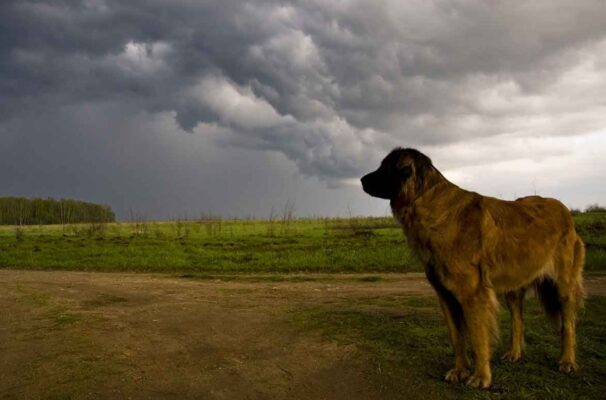Storms can be distressing for our furry friends, with thunder, lightning, and barometric changes often causing anxiety and fear. Proper preparation can help your dog feel secure and reduce their stress during these unsettling events. Here’s a guide to help your dog weather the storm safely and calmly.

Understand Your Dog’s Anxiety
Before taking action, it’s important to understand why storms are frightening for dogs. The loud noises, bright flashes, and pressure changes can be overwhelming. Recognizing these triggers will guide you in creating an effective calming strategy.
Step 1: Create a Safe Space
Designate a safe, quiet area in your home where your dog feels comfortable. This could be a basement, laundry room, or any insulated space away from windows and noise. Provide familiar items like blankets, beds, or toys to create a comforting environment.
Step 2: Use Calming Products
Consider using calming aids, such as:
- Thundershirts or Anxiety Wraps: These apply gentle pressure that can soothe your dog.
- Aromatherapy: Lavender or chamomile oils may help calm your dog. Ensure they are pet-safe.
- Calming Supplements: Consult your vet about safe supplements or over-the-counter options that could help reduce anxiety.
Step 3: Background Noise
Playing soothing music or white noise can help drown out the sound of thunder. Classical music or dedicated pet-calming playlists can be particularly effective.
Step 4: Desensitization Training
Introduce storm sounds using audio recordings at a low volume, gradually increasing over time while reinforcing calm behavior with treats and praise. This gradual exposure can help reduce your dog’s sensitivity to real storms.
Step 5: Stay Calm and Offer Reassurance
Dogs often mirror their owner’s emotions, so your calm demeanor can influence their response. Offer reassurance with gentle petting and soft verbal reassurances, but avoid over-coddling which may unintentionally reinforce fear.
Step 6: Distract and Engage
Engage your dog with activities they enjoy, like playing fetch or giving them a puzzle toy. Distraction can divert their attention away from the storm and towards something positive.
Step 7: Consult a Professional
If your dog’s storm anxiety is severe, consider consulting a veterinarian or animal behaviorist. They can provide tailored advice or medication to help manage anxiety effectively.
Conclusion
Preparing your dog for storms is about building a sense of safety and calm. By taking proactive steps, you can help minimize the stress that storms cause and create a more comfortable experience for your dog. Remember, each dog is unique, and finding the right combination of strategies can lead to peaceful, stormy days ahead.
With time, patience, and understanding, you can transform stormy nights from frightful experiences into manageable, calm moments for your canine companion.

